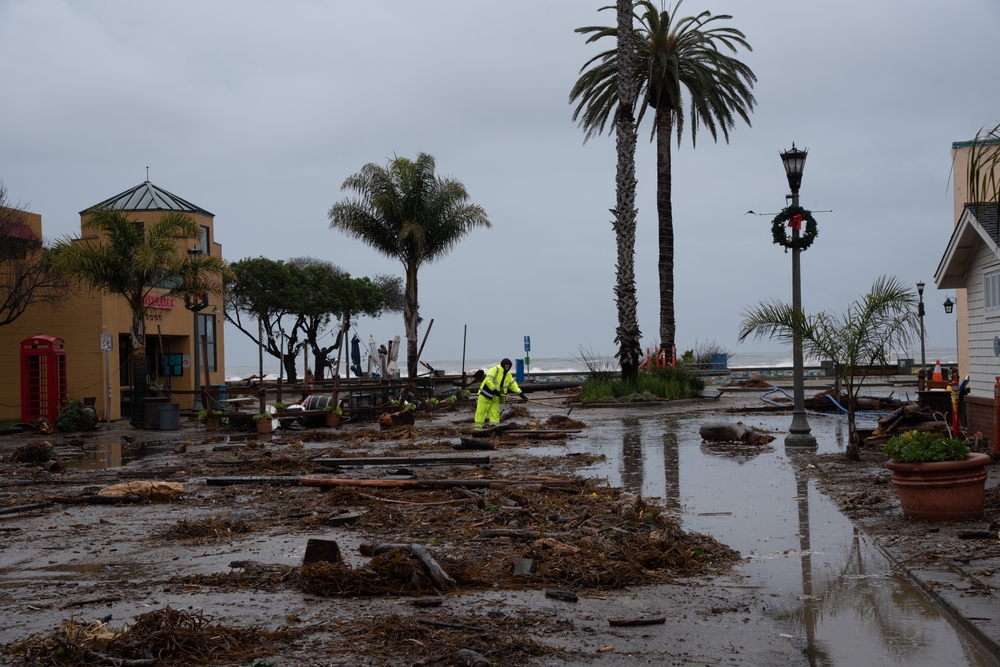California Flooding Shows Few Homeowners Have Flood Insurance Coverage

Since the Christmas holiday season, a shocking 32 trillion gallons of rain and snow have fallen on California. It has washed out roads, left millions without power and led to mudslides as wildfire-charred hills cannot possibly soak up the precipitation falling from the sky. The recent storms have caused damage in 41 of California’s 58 counties and killed 21 people so far.
Unfortunately, for many home and business owners, the nightmare will continue as only 230,000 homes and buildings are carrying flood insurance. This breaks down to roughly 2% of the properties that have been impacted by the storms. The National Flood Insurance Program insures roughly 191,000 of those homes with private insurers picking up the rest.
California has suffered drought conditions for years which has led to homeowners feeling the risk of flooding was minimal, leading to homeowners to drop or not carry flood insurance.
“People think the only people that need flood insurance are people who live right on the beach or on the banks of a river that has a history of flooding,” said Amy Bach, the executive director of insurance consumers group United Policyholders in a recent AP News article. “In reality, far more people are threatened by rushing or rising water.”
Flood insurance is required in certain areas but flooding often happens in areas where flood insurance is not required. If your home falls in a high-risk flood zone according to official Federal Emergency Management Agency maps and you have a federally backed mortgage you will be required to carry flood insurance.
Even if your mortgage is not backed by the federal government, there is a good chance your bank will require you to carry flood coverage if you are in a high-risk area. The bad news is that these maps cannot really predict where flooding will happen, and in many cases, when the storm is as extreme as the ones California has been experiencing, flooding will happen in areas not considered high risk.
This has left many homeowners who rejected flood insurance due to the cost and the fact that it wasn’t required at their home facing major repair bills that they will have to cover out of pocket.
The recent storms did so much damage to several thousand homes that they are unlivable until they have been repaired or rebuilt. Nicholas Pinter, a professor at the University of California, Davis who researches watersheds, said in the recent AP News article that California needs to be prepared for even bigger events as well as invest more in flood defenses. “It is worrisome that there was as much damage as there was for what was extreme but not catastrophic flooding,” he said in the AP News article.
The National Flood Insurance Program (NFIP) recently updated how they rate the risk a home presents, calling the new system Risk Rating 2.0. In many cases, the new ratings have led to dramatic premium increases which possibly led to many homeowners dropping their flood insurance. Since Risk Rating 2.0 when into effect, the number of flood insurance policies in California has dropped roughly 5%.
Some homeowners were unaware that flood damage is not covered by a standard homeowners policy. Jay Laub, whose home was so flooded he had to be rescued from the floodwaters, said he assumed his house was covered for flood in the recent AP News article. Unfortunately, he was wrong.
Flood damage is almost always excluded from a standard flood insurance policy, in order to be covered against flood damage, a homeowner must be carrying a separate flood insurance policy.
If your home is in a high or even medium risk area, you should consider carrying flood insurance. It should be noted that flood insurance almost always comes with a 30-day waiting period before coverage kicks in so it is not possible to purchase flood insurance once a storm is headed in your direction.
